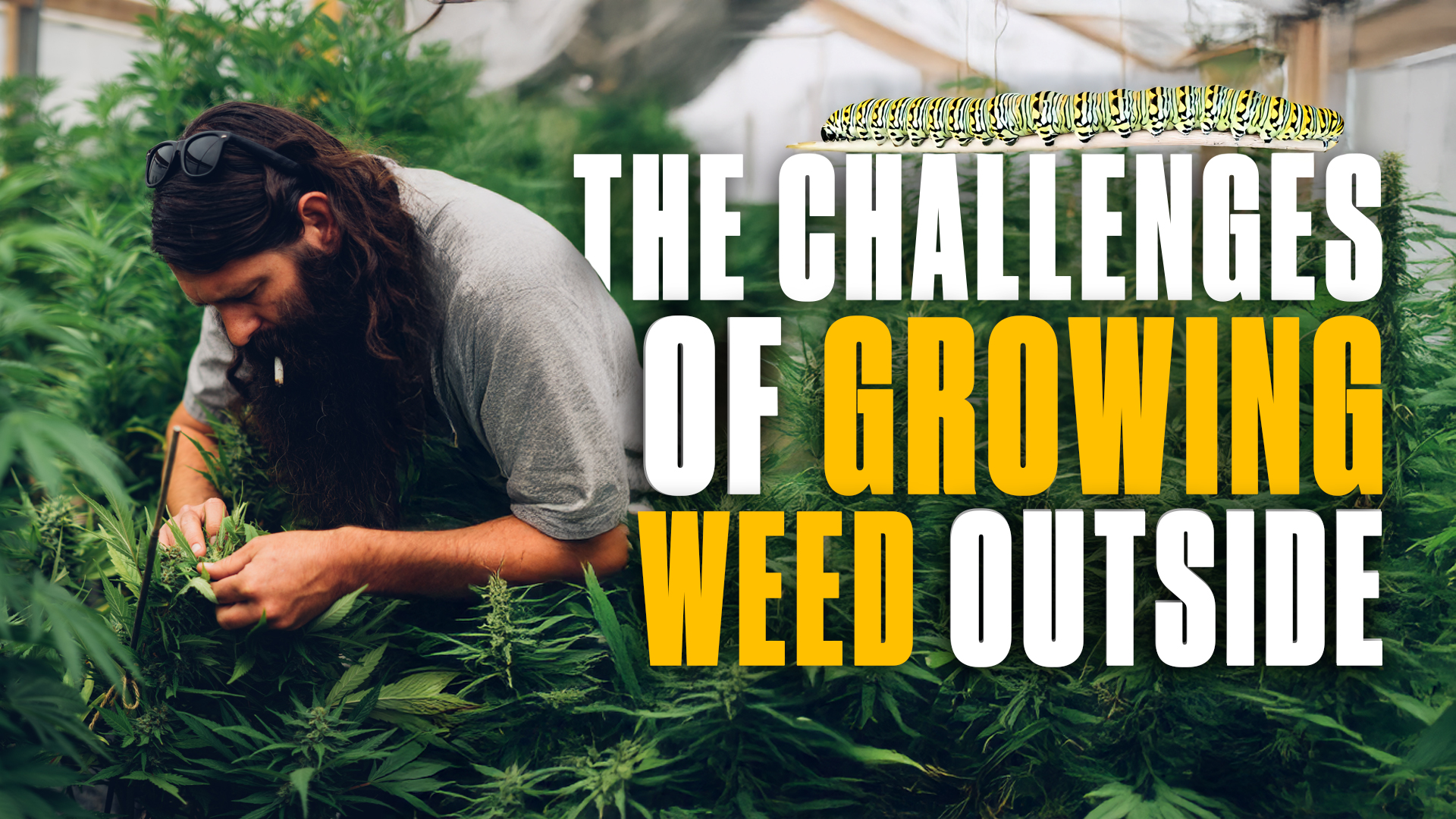What I Learned About Soil
Topics
Luke’s Origin Story 1:40
Indoor Setup & Seeds 4:00
Embracing Living Soil 5:30
Soil Mix & Reuse 9:30
Organic vs. Synthetic Quality 15:30
Motivation & Future Plans 16:45
Super Cropping “Chiropractic” 19:50
Transcript
Follow along using the transcript
Kyle: Good morning everybody. We have an awesome guest today. His name is Luke McCallen—he goes by @mccannabisluke on Instagram. I just couldn’t help but notice his beautiful page, so thanks for joining the show today, man.
Luke: Hell yeah, I’m glad to be here—being around the legend like yourself and just learning from each other, you know, bouncing ideas off each other—I’m really excited.
Kyle: You mentioned you're getting into living soil and organics. When you said you used to be as well, it sounded like it's not totally new to you—right?
Luke: Man, I’ve got 35 years growing. I started in the ’80s—before most of the people watching were even born. Back then, there was only one book: The Grower’s Guide by Ed Rosenthal and Mel Frank. I used that book and started making teas with guano—basically feeding my plants like that for the first four or five years. There weren’t any nutrients made for cannabis—you had to make your own. I rediscovered living soil recently and feel it’s absolutely the easiest way for people to grow. It also produces the tastiest plants.
Kyle: So give us a little background: how did you get into cultivation, and what steered you toward living soil?
Luke: I grew up in Indiana and started cultivating after picking up some books and watching growers like you online. I began with synthetics, but it wasn’t going well. We moved to Michigan—my mom (rest in peace), who was a huge gardener, taught me everything about working with dirt and worms. Then I discovered Builder Soil through its YouTube channel—I was amazed how they brought outdoor cultivation indoors, mimicking nature. I went all-in: purchased Builder Bodies of Soil, amendments, and set up a proper environment. It was such a game‑changer, especially since I travel five days a week and still manage my garden. I asked my wife—she’s amazing—to help with the initial setup. From that moment on, living soil has been history: everything you need is already in the soil food web—microbes, life, ongoing natural processes. It allows you to step back, read more about secondary metabolites, and truly appreciate the plant—this really speaks my language.
Kyle: Your setup looks dedicated online—it’s impressive that you openly share everything. How many tents do you have going right now?
Luke: I’ve got four now—two big ones for different stages, and two smaller ones for propagation and clones. I haven’t gotten into breeding yet, but I just ran one of my first clones from a friend I met at an Illinois grow show—and it’s doing awesome. I like seeds—you plant a seed, and every grower can end up with slightly different phenotypes. That variability excites me.
Kyle: One of the main reasons your grow stands out—and your dedication shines—is that you show living soil isn’t complex. It’s one of the easiest and simplest ways to grow.
Luke: Absolutely. When I first learned about organic and no-till gardening, I thought I had to understand chemistry—zinc, boron, all these elements. Builder Soil made it simple: get a reputable base soil, plant, water lightly, and let natural microbial processes flourish. I was blown away. There are a lot of gatekeepers hiding their secrets. For me, it’s better to be transparent—I show my process, because people today are busy with jobs and families. With living soil, you plant, water, let it mature, and spend time doing what you want. It’s amazing how cycles get better with each grow.
Kyle: So tell us more: what soil recipe are you using, and how do you plan to reuse it?
Luke: I started with Builder Soil’s “Build‑a‑Soil” peat‑moss blend—one-third compost, one-third aeration (pumice, rice hulls), one-third food (castings, compost). I lean on ferments: I make lactic acid bacteria tea—which smells strong though. After each grow, I refresh with compost or castings. I’ll also add Builder’s Kraft Blend (3‑5‑2 NPK plus local amendments like camelina meal, oyster shell flour, etc.). I sidestep high-processed guanos or big industrial meal. I prefer mom‑and‑pop brands and eventually start making my own composts. I did a soil test after seven grows in one bed—it was still balanced, no urgent need to re-test. The key to success is maintaining microbial health: beneficial bacteria, fungi, mycorrhizae, nematodes, predator mites form a self-sustaining web. Treat your soil like a battery—not fully depleting it—by adding ferments, compost, castings to replenish life. I chop and drop: all plant trimmings go back into the soil to restore nutrients as you grow. With mulch and organic waste, you’re basically composting in motion throughout the cycle. I simply add ½ to 1 cup of amendments per cubic foot, 1–2 inches of castings or compost on top, water it in, and you’re ready for the next grow.
Kyle: Even someone inexperienced might find this overwhelming, but you started with a solid soil base and just replaced it each cycle. It’s really not much different from using bottled nutrients—minus the overfeeding risk.
Luke: Exactly. I’m still a relatively new grower—two years on living soil, three years total—but I keep it simple: plant gets microbes, microbes eat compost, plant eats microbes. That basic cycle is all I teach. I don’t dwell on every little microbe or detail—just get good soil, sow seed, water, and go.
Kyle: Sounds good. Have your harvests compared to bottle-fed cannabis?
Luke: Honestly, it’s night and day. My synthetic plants struggled big time—I tried both—and the soil-grown ones outclass dispensary weed every day. It’s like McDonald's vs gourmet burger. When friends share dispensary product, I usually decline—I’m just used to mine. We’re here to inspire healthier growers. Price-wise, it’s cheaper, quality-wise, it’s superior. Sure, you might get slightly less dense buds compared to very heavily-fed plants, but I wouldn’t sacrifice that organic smoking quality for weight.
Kyle: What are your goals for the coming years?
Luke: I moved to Michigan partly to focus on CBD/CBN for medical use—my mom passed from cancer and had limited options—she could either take commercial RSO or nothing. That motivated me. My aim is to open a small mother-and-pop shop with a buddy from Indiana—we’ll grow CBD, make tinctures, help patients (legislation changed and caregiving got restricted in Michigan). Our business model is word of mouth. Social media has exploded beyond my expectations, but I plan to stay original and transparent. If I have mold, or mites—I'll cover it openly. Mistakes become lessons. The goal is to build a cannabis community rooted in practical knowledge and empathy.
Kyle: Teaching is about responsibility — sharing what works while respecting that everyone grows in their own way. It’s all about GUA: Grow, Use at home.
Kyle: Kudos to you — your growth in the community has been impressive. People need voices like yours to encourage them that they can grow a couple of plants starting at home.
Kyle: Now — if you have anything you want to ask me, feel free.
Luke: Yes — I’ve always wanted to ask: how did you discover super cropping? Did you intentionally snap branches and see what happened?
Kyle: That’s a classic legend—almost like Strawberry Cough story. When I was working with High Times, I went to Canada to cover a legal medical grow (early ’90s). I met a young grower using 45-inch parabolic reflectors over two 10–15 gallon pots. He bent the plant into a stadium shape—cracking it so branches fan out around the reflector like a chandelier. Every bud got equal light. I learned super cropping from him—it later became my signature technique. I didn’t invent it; I learned it and shared it.
Kyle: Super cropping changed everything. People ask how growers get those dense colas—you bend branches to lower nodes to even canopy. You don’t need tall branches—just manage space. It’s a technique tailored for small grows or maximizing yield per plant. You develop a sense of touch; once you do, it’s easy to bend a branch and hear that little crack, and when it stays put—that’s when the magic happens.
Luke: It still amazes me—I’ve tried teaching friends—repetition builds that feel and crack-sound—you sense it. It’s a growth hack everyone should try.
Kyle: Anything else we missed?
Luke: Really—it’s simple: grow—organic or synthetic—choose what suits you. Plenty of teachers exist. What matters: clarity in message, accessibility, encouraging practical growers to start. That alone makes a difference.
Kyle: Exactly. It’s a process, but once you start—it’s easier than it seems. You can buy a kit, Builder Soil recipes, classic “super soil”—or just DIY. No excuse not to begin.
Kyle: I see a bright path ahead for you. Keep sharing. If you have more to dive into, I’d love to host you again.
Luke: Definitely—deep dive next time would be awesome. Been an honor.
Kyle: A big thank-you to everyone listening out there—living soil is real, light is as important as soil, and you can study more details moving forward. Check out my CannabisLook page on Instagram. I’m Kyle Cushman—thank you for joining us on Grow Weed at Home.





